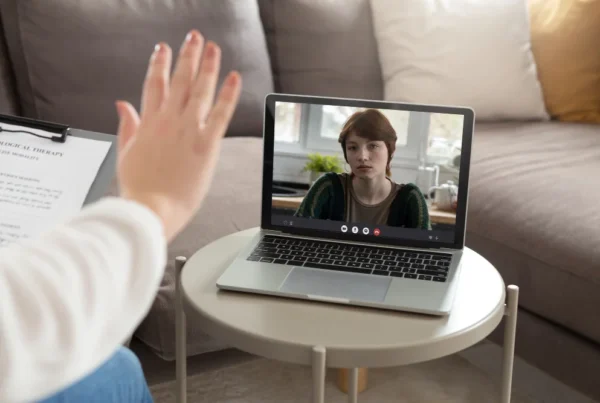Insomnia affects millions of people worldwide, disrupting their physical and mental health. In this article, we’ll explore effective strategies to get rid of insomnia and improve sleep quality, from practical sleep hygiene changes to therapy and natural remedies that can help you sleep better.
Introduction
Insomnia is a common sleep disorder that affects millions of people worldwide. It’s characterized by difficulty falling asleep, staying asleep, or waking up too early and not being able to get back to sleep. The impact of insomnia on daily life can be significant, leading to increased stress, fatigue, irritability, and decreased productivity. Chronic insomnia can even lead to more serious health problems, including weakened immunity, depression, and anxiety.
The importance of quality sleep for physical and mental well-being cannot be overstated. Sleep is crucial for your body’s recovery, cognitive function, and emotional regulation. When you don’t get enough restful sleep, it can take a toll on your overall health and quality of life. Fortunately, there are many ways to get rid of insomnia fast and improve sleep patterns for long-term health.
Improve Sleep Hygiene for Better Sleep
Create a Consistent Sleep Schedule
One of the most important steps in getting rid of insomnia is regulating your body’s internal clock, also known as the circadian rhythm. To achieve this, it’s essential to maintain a consistent sleep schedule. Going to bed and waking up at the same time every day, even on weekends, helps signal to your body when it’s time to sleep and when it’s time to wake up.
Try to aim for 7-9 hours of sleep each night. If you find it difficult to fall asleep at your desired bedtime, avoid naps during the day, as they can interfere with your ability to fall asleep at night.
Limit Screen Time and Exposure to Blue Light Before Bed
In the modern age, screens are everywhere – phones, computers, and televisions. Unfortunately, the blue light emitted by these devices can interfere with your body’s production of melatonin, the hormone that regulates sleep. To improve your chances of falling asleep, it’s essential to limit screen time at least 30 to 60 minutes before bedtime.
Instead of scrolling through your phone, engage in relaxing activities like reading a book, listening to calming music, or practicing meditation. These activities help prepare your body and mind for restful sleep.
Design a Sleep-Friendly Environment
Your sleep environment plays a critical role in the quality of your sleep. To create a sleep-friendly environment, ensure your bedroom is quiet, dark, and cool. Research suggests that the ideal sleep temperature is between 60 and 67 degrees Fahrenheit (15 to 20 degrees Celsius). Keep your room free of noise, and if necessary, use earplugs or a white noise machine to block out disruptive sounds.
Additionally, make sure your bed is comfortable and supportive. A good mattress and pillows that align with your sleeping position can make a huge difference in sleep quality.
Avoid Stimulants Like Caffeine and Nicotine Close to Bedtime
Caffeine and nicotine are both stimulants that can keep you awake by increasing heart rate and blood pressure. It’s best to avoid consuming these substances at least 4-6 hours before bedtime. Caffeine, found in coffee, tea, and some sodas, can remain in your system for hours, disrupting your ability to fall asleep. Similarly, nicotine found in cigarettes and e-cigarettes can increase restlessness and reduce sleep quality.
By cutting out stimulants close to bedtime, you can improve your chances of getting deep, restorative sleep.
Cognitive Behavioral Therapy for Insomnia (CBT-I)
What Is Cognitive Behavioral Therapy for Insomnia (CBT-I)?
Cognitive Behavioral Therapy for Insomnia (CBT-I) is a highly effective, evidence-based approach for treating chronic insomnia. Unlike medication, CBT-I addresses the root causes of insomnia by helping individuals change their sleep habits, thoughts, and behaviors.
CBT-I involves a structured program that includes components such as sleep education, relaxation techniques, cognitive restructuring, and sleep scheduling. The goal of CBT-I is to help individuals develop healthier sleep patterns and break the cycle of insomnia.
How CBT-I Helps Change Negative Sleep Behaviors and Thoughts
One of the core principles of CBT-I is identifying and challenging the negative thought patterns and behaviors that contribute to insomnia. For example, individuals with insomnia often develop anxiety about sleep, which makes it harder to fall asleep. CBT-I helps address this anxiety by teaching relaxation techniques and promoting positive sleep associations.
By understanding how sleep works and learning how to manage thoughts and emotions related to sleep, individuals can reduce the mental barriers preventing restful sleep.
The Benefits of Seeking a Therapist Trained in CBT-I
While many resources and books are available on CBT-I, working with a trained therapist can significantly improve the success of this treatment. A therapist can personalize the approach to suit your specific needs, monitor your progress, and provide guidance throughout the process.
CBT-I typically involves 6-8 sessions, either in person or through online therapy, and has been shown to be highly effective for long-term sleep improvement.
Success Rates and Studies Supporting CBT-I for Treating Insomnia
Studies have demonstrated that CBT-I is highly effective in treating chronic insomnia. According to research, about 70-80% of individuals who undergo CBT-I experience significant improvements in sleep quality and reduced insomnia symptoms. Additionally, the benefits of CBT-I often last long after treatment ends, making it a sustainable option for long-term sleep improvement.
Relaxation Techniques and Stress Management
Deep Breathing and Progressive Muscle Relaxation
Relaxation techniques are essential for calming the mind and preparing the body for sleep. Deep breathing exercises help reduce stress by activating the parasympathetic nervous system, promoting relaxation and lowering heart rate.
Progressive muscle relaxation (PMR) involves tensing and then relaxing muscle groups throughout the body, starting from your toes and moving up to your head. This technique can help release physical tension, allowing your body to unwind and prepare for rest.
Meditation and Mindfulness Exercises to Reduce Anxiety
Meditation and mindfulness exercises are excellent for reducing anxiety, a common cause of insomnia. Practicing mindfulness involves focusing on the present moment without judgment. Guided meditation, often available through apps or YouTube videos, can help guide your thoughts away from worries and racing thoughts.
Visualization Techniques for Calming the Mind Before Sleep
Visualization is another powerful technique for promoting sleep. Try to imagine a peaceful scene, such as a beach or forest, and focus on the details—what you hear, see, and feel. This can help distract your mind from stress and anxiety, making it easier to drift into sleep.
How Regular Relaxation Practices Can Help Reduce Insomnia Over Time
Incorporating relaxation techniques into your daily routine can have lasting benefits for sleep. Regular use of deep breathing, meditation, and visualization techniques can help reduce anxiety, lower stress levels, and promote better sleep over time.
Conclusion
In conclusion, getting rid of insomnia requires a multi-faceted approach that combines healthy sleep hygiene, relaxation techniques, therapy, and, if necessary, medical or natural remedies. By following the strategies outlined in this article, such as creating a consistent sleep schedule, reducing stress, and practicing relaxation techniques, you can improve your sleep quality and overcome insomnia.





